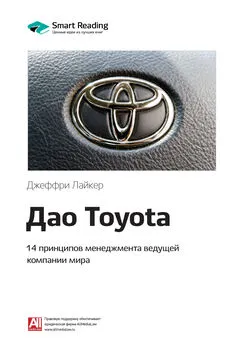Одед Шенкар - Имитаторы: Как компании заимствуют и перерабатывают чужие идеи
- Название:Имитаторы: Как компании заимствуют и перерабатывают чужие идеи
- Автор:
- Жанр:
- Издательство:Литагент Альпина
- Год:2017
- Город:Москва
- ISBN:978-5-9614-4934-1
- Рейтинг:
- Избранное:Добавить в избранное
-
Отзывы:
-
Ваша оценка:
Одед Шенкар - Имитаторы: Как компании заимствуют и перерабатывают чужие идеи краткое содержание
Имитаторы: Как компании заимствуют и перерабатывают чужие идеи - читать онлайн бесплатно ознакомительный отрывок
Интервал:
Закладка:
1. Выбирая различные пути развития, от свободного движения до скачкообразных рывков, компании повышают свои риски, игнорируя преимущества имитации.
2. Темп имитации сопоставим с темпом инновации и даже превышает его.
3. Одни имитаторы добиваются успеха, тогда как другие терпят неудачу из-за отсутствия необходимых способностей или неумения осуществлять стратегическое планирование.
4. Имитация не только не противоречит инновации, но и при правильном применении стимулирует ее.
5. В результате объединения имитации и инновации с целью создания конкурентного преимущества возникает имовация.
2. Наука и искусство имитации
Археологические исследования показывают, что в древние времена… человек копировал явления окружающего мира гораздо активнее, чем мы предполагали.
Габриель Тард, 1903 г.Имитация является одной из фундаментальных основ биологической и социальной жизни. Благодаря ей биологические виды обучаются, познают мир, выживают, конкурируют и развиваются, приобретая характеристики и поведение, позволяющие им успешно существовать в условиях окружающей среды. Имитация представляет собой жизненно важный механизм, используемый человеком для приобретения базовых умений, например при освоении языка. Организации используют ее для обучения и конкуренции, культурные и социальные общности – для установления ценностей и норм поведения, нации – чтобы не отставать друг от друга. Имитация поддерживает выживание человеческой расы посредством использования инструментов и развития компетенций. Имитация – способ передачи сложных социальных традиций из поколения в поколение {36} 36 Yando, R., Seitz, V., and Zigler, E. 1978. Imitation: A developmental perspective. Hillsdale, NJ: Lawrence Elbaum.
. Она необходима для эволюции человеческого общества, поскольку обеспечивает распространение новых идей, технологий и изобретений благодаря так называемому инерционному эффекту {37} 37 Michael Tomasello, as cited in Hurley, S., and Chater, N. 2007. Introduction: The importance of imitation. In Perspectives on imitation: From neuroscience to social science, eds. S. Hurley and N. Chater. Cambridge, MA: MIT.
.
Конец ознакомительного фрагмента.
Текст предоставлен ООО «ЛитРес».
Прочитайте эту книгу целиком, на ЛитРес.
Безопасно оплатить книгу можно банковской картой Visa, MasterCard, Maestro, со счета мобильного телефона, с платежного терминала, в салоне МТС или Связной, через PayPal, WebMoney, Яндекс.Деньги, QIWI Кошелек, бонусными картами или другим удобным Вам способом.
Комментарии
1
Hogan, D. G. 2007. Selling'em by the sack: White Castle and the creation of American food. New York: NYU Press; Rivkin, J. W. 2001. Reproducing knowledge: Replication without imitation at moderate complexity. Organization Science 12, 3, 274–293; Big bite. 2008. Economist, April 26, p. 107.
2
Adamy, J. 2007. Yum uses McDonald's as guide in bid to heat up sales. Wall Street Journal, December 13, A21.
3
Teece, D. 1986. Profiting from technological innovation: Implications for integration, collaboration, licensing and public policy. Research Policy 15, 285–305.
4
S. P. Schnaars provides numerous case histories of late entrants winning against pioneers. See Schnaars, S. P. 1994. Managing imitation strategies: How late entrants seize markets from pioneers. New York: Free Press.
5
Connor, C. 2008. Interview with author, October 24.
6
See, for instance, Schnaars, Managing imitation strategies.
7
Mansfield, E., Schwartz, M., and Wagner, S. 1981. Imitation costs and patents: An empirical study. Economic Journal 91 (December), 907–918; Levin, R., et al. 1984. Survey research on R&D appropriability and technological opportunity. Working Paper Part 1: Appropriability. New Haven, CT: Yale University; Burns, G. 1995. A Fruit Loop by any other name… BusinessWeek, June 26, 73–76, as cited in Collins-Dodd, C., and Zaichkowsky, J. L. 1999. National brand responses to brand imitation: Retailers versus other manufacturers. Journal of Product and Brand Management 8, 2, 96–105; Belson, K. 2008. Hertz tosses some car keys into the ring, battling Zipcar. Wall Street Journal, December 17, B7.
8
The Business of Innovation. CNBC. October 5, 2009.
9
The World Bank. 2008. Global economic prospects: Technology diffusion in the developing world. Washington, DC: The World Bank.
10
Agarwal, R., and Gort, M. 2001. First-mover advantage and the speed of competitive entry, 1887–1986. Journal of Law and Economics 44, 1, 161–177 (cite on page 168).
11
The World Bank. 2008. Global economic prospects; Agarwal and Gort, First-mover advantage and the speed of competitive entry, 1887–1986; Mansfield, E. 1985. How rapidly does new industrial technology leak out. Journal of Industrial Economics 34, 2, 217–223; Mansfield, E. 1961. Technical change and the rate of imitation. Econometrica 20, 4 (October), 741–766; Mansfield, Schwartz, and Wagner. Imitation costs and patents: An empirical study.
12
Parvis, E. N. 2002. The pharmaceutical industry: Access and outlook. Huntington, NY: Nova Science Publishers; Bollier, D. 2002. Silent theft: The private plunder of our common wealth. New York: Routledge, 167; Pan American Health Organization Staff. 2007. Health in the Americas. Washington, DC: PAHO; World Health Generic Pharmaceutical Association. 2007. IMS National Sales Perspective. Arlington, VA: Gph A; Frank, R. G, and Seiguer, E. 2003. Generic drug competition in the US: Business briefing. 2003. Pharmagenerics, 65–70; Harris, G. 2002. For drug makers, good times yield to a new profit crunch. Wall Street Journal, April 30, A1.
13
Bowers, P. M. 1989. Boeing aircraft since 1916. London: Putnam Aeronautical Books.
14
Drucker, P. F. 2001. The essential Drucker. New York: Harper Business.
15
Coughlan, P. J. 2004. The golden age of home video games: From the reign of Atari to the rise of Nintendo. Case 9-704-487. Boston: Harvard Business School; Christensen, С. M. 1997. The innovator's dilemma: When new technologies cause great firms to fail. Boston: Harvard Business School Press; Corts, K. S., and Freier, 2003. A brief history of the browser wars. Case 9-703-517. Boston: Harvard Business School; Bryman, A. 1997. Animating the pioneer versus late entrant debate: An historical case study. Journal of Management Studies 34, 3, pp. 415–438; Lewin, A., and Massini, S. 2003. Knowledge creation and organizational capabilities of innovating and imitating firms. Paper presented at the Druid Summer Conference on Creating, Sharing and Transferring Knowledge, Copenhagen, June 12–14.
16
Knowledge@Wharton. 2006. Where will Indian Drug Companies be in Five Years? Everywhere – If They Innovate. Report prepared by Knowledge@Wharton in collaboration with Bain & Company, www.bain.com/bainweb/pdfs/cms/marketing/bain%20India%20 Pharma%20FINAL%203-21-06.pdf.
17
Nordhaus, W. D. 2004. Schumpeterian profits in the American economy: Theory and measurement. Discussion Paper 1457. New Haven, CT: Cowles Foundation.
18
Bryman, Animating the pioneer versus late entrant debate: An historical case study.
19
Bessen, J., and Maskin, E. 2000. Sequential innovation, patents and imitation. Working Paper. Cambridge, MA: Department of Economics, MIT; Schwartz, M. A. 1978. The imitation and diffusion of industrial innovations. Ann Arbor: University of Michigan Press; Mansfield, Schwartz, and Wagner, Imitation costs and patents: An empirical study; Levin et al., Survey research on R&D appropriability and technological opportunity.
20
Tsai, T., and Johnson, I. 2009. As giants step in, Asustek defends a tiny PC. Wall Street Journal, May 2, B1.
21
Nordhaus, Schumpeterian profits in the American economy: Theory and measurement; Bayus, B. L., Erickson, G., and Jacobson, R. 2003. The financial rewards of new product introductions in the personal computer industry. Management Science 49, 2, p. 198; Mansfield, E., Rapoport, J., Schnee, J., Wagner, S., and Hamburger, M. 1971. Research and innovation in the modern corporation. New York: Norton.
22
Levitt, T. 1966. The management of reverse R&D or how to imitate your competitor's products before it's too late. Harvard Business Review, September – October, 33–37; cite on 33.
23
Utterback, J. M. 1994. Mastering the dynamics of innovation. Boston: Harvard Business School Press.
24
Lewis, M., Rai, A., Forquer, D., and Quinter, D. 2007. UPS and HP: Value creation through supply chain partnerships. Case Study 907D02. London: Ivey School of Business; Hout, Thomas M. 2006. HP's computer business: Can it compete? Case HKU558. Hong Kong: University of Hong Kong, Asia Case Research Center.
25
Rollins, Kevin. 2007. The Wal-Mart of High Tech? Interview by Bill Breen. Fast Company. Mansueto Ventures LLC. http://www.fastcompany.com/magazine/88/dell-rollins.html.
Читать дальшеИнтервал:
Закладка:










